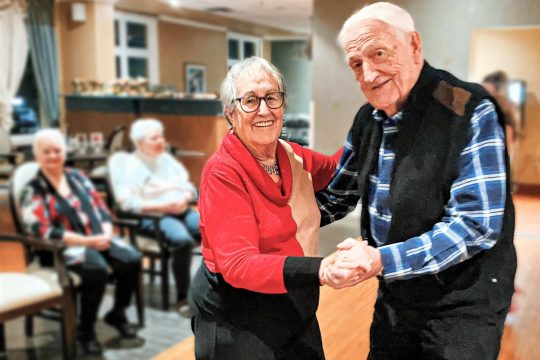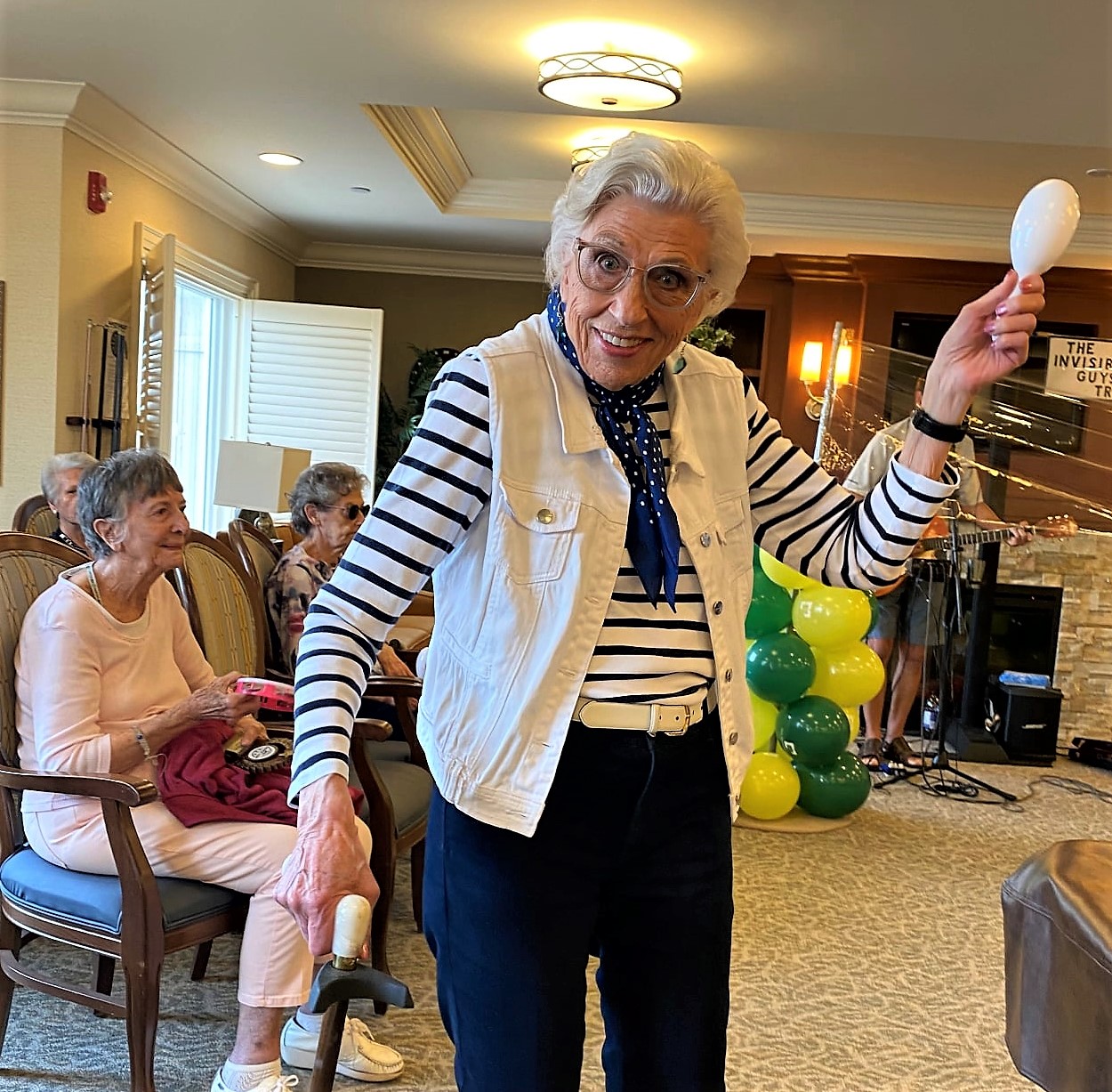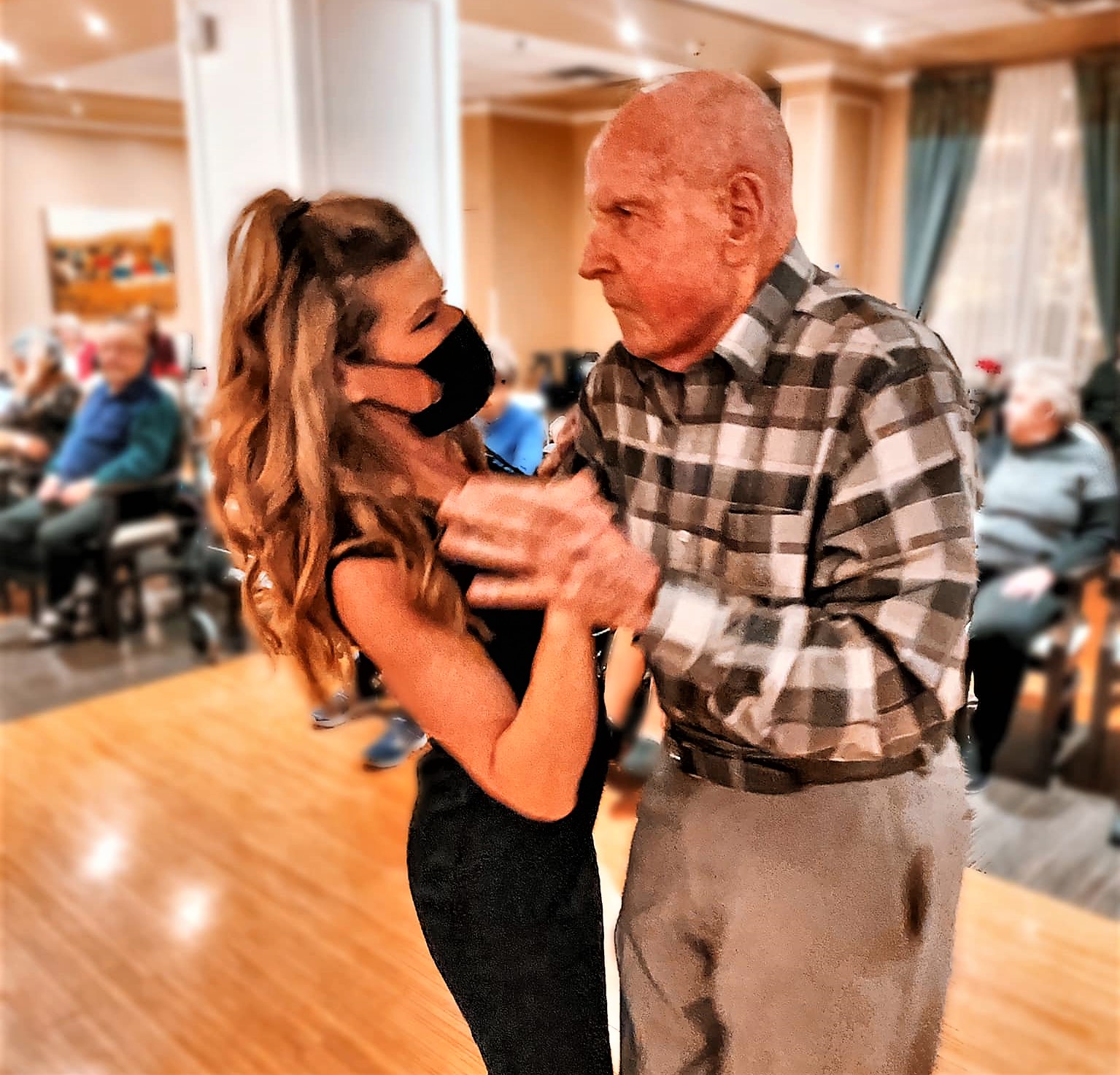
Something special happens when the music starts.
Some people sway back and forth, others bob their head in time with the beat. From the tiniest movement to the most bold, moving the body in a rhythmic way that expresses emotion, releases energy, or simply shows delight, is the definition of dance.
From ballroom to boogie, dancing is also one of the most enjoyable ways of getting up, moving, and keeping fit. And, as it turns out, dancing is good for the brain.
The Benefits of Dancing for Seniors
When someone dances, art and sport intersect. Because it simultaneously combines physical, emotional, and cognitive stimulation, this intersection may account for the many benefits that dancing holds for older adults.
It may just be the kale of exercise.
1. Dance is Good for Your Brain
In a 21 year study published in the New England Journal of Medicine, researchers looked at whether physical or cognitive recreational activities influenced mental acuity. They discovered that some activities had a significant beneficial effect. Other activities had none.
One of the surprises of the study was that almost none of the physical activities appeared to offer any protection against dementia. There can be cardiovascular benefits of course, but the focus of this study was the mind. The following activities were shown to be protective:
- Reading and swimming – 35% reduced risk of dementia
- Doing crossword puzzles at least four days/week – 47%
- Dancing frequently – 76%.
Those who danced regularly showed the greatest risk reduction of any activity studied, cognitive or physical.
Why? One possible reason is that dance creates neuroplasticity. Since it requires split-second rapid-fire decision making, as opposed to rote memory (retracing the same well-worn paths), it stimulates the connectivity of your brain by generating the need for new pathways.
Similarly, a later study found that social dancing increased the size of the hippocampus, a region of the brain critical for learning, memory and equilibrium.
2. Dance Is Good For Your Heart
Unlike other types of cardiovascular exercise, dancing doesn’t necessarily require specialized equipment or workout settings, making it a much more accessible option for those looking to lower their blood pressure and cholesterol and maintain a healthy body weight.
When you dance, your heart rate increases to pump more oxygenated blood to the muscles being used. The faster your heart beats, the more blood goes to your lungs to gather oxygen and transport it to your tissues. This increase in heart rate helps to strengthen your heart and keep the muscle conditioned.
Researchers from two universities in Sydney, Australia showed that, with a 46% lower risk over a decade, dancing is one of the best ways for older adults to protect themselves from cardiovascular disease death.
3. Doing the Cha Cha Prevents Falls
Dancing is a multifaceted physical activity, which enables older adults to significantly improve their lower body muscle endurance, balance, agility, and gait.
Senior dance classes, such as ballroom dancing and Zumba (and dancing in general), reduce falls by 31% and the risk of falling by 37% for older adults. The balance training from dancing also helps a person react faster to prevent a fall should they lose control while walking.
4. Dance Away the blues
Learning new moves is more than just a fun way to exercise. A growing body of evidence shows that dancing improves senior mental health. The physical movements produce a feel-good chemical in the brain called endorphins that improves mood and counteracts depression for older adults.
We’ve seen it firsthand for those living in retirement communities! When older adults engage in dance classes like those at the Chapel Hill retirement residence in Ontario, there’s a tangible shift in the group’s mood as they start to swing their hips.
5. Dance Brings People Together
There is perhaps nothing more universal than the drive to move our bodies in sync with music. When dance is done in a group setting, it can encourage seniors to interact socially. This helps them to meet others in their residence, creating a sense of community and involvement.
If you need a better reason to do the two-step, studies show that dancing at parties and in groups encourages social bonding, whether it is a traditional waltz, a tango, or even the hokeypokey.
Benefits Of Dance For People With Dementia
Mild cognitive impairment is an age-related condition that is associated with frequent memory lapses and impaired judgement. If untreated, 39.2% of people with mild cognitive impairment could progress to develop dementia.
According to a 2021 study, dance is a non-pharmacological and inexpensive intervention that can be implemented for older adults. Programs with a rich dance and movement component – like ASC’s BLOSSOM – can slow down the cognitive deterioration.
For individuals living with dementia or Alzheimer’s disease, dance can be effective in stimulating some additional benefits, like the ones below.
6. Dance Is a Form of Expression
Dance provides an opportunity to express emotions and engage with others without words. Particularly for people living with dementia who may find verbal communication a challenge, the opportunity to express oneself through movement can be empowering
7. It Reduces Anxiety and Agitation
For those with cognitive decline, not being able to remember words, places, or people can be very stressful. Conversely, stress can increase memory loss. Moving to music can ease the fear, anxiety, agitation common to dementia.
Alzheimer’s can take away a person’s ability to emotionally bond with their caretakers. By dancing with caregivers or loved ones, emotional closeness is increased, further helping to reduce incidences of agitation.
8. Dance Provides an Opportunity For Reminiscence
For many of us, our fondest memories and most positive life experiences involve dancing. Think back to your high school prom or you or your children’s weddings. As seniors dance – even if it just means swaying to the music – many recall fond memories from their yesteryears.
At All Seniors Care, we believe that dance isn’t just for the young at heart – it is great at any age! If you are looking for a retirement residence in Canada with an active dance calendar, take a tour and learn about our many locations, like Shaftesbury Park in Winnipeg, Manitoba or McCarthy Place in Stratford, Ontario.
When you’re looking for a retirement residence, find one that fits your lifestyle. Schedule a visit and be sure to ask about the social clubs and activities.
Writer – Julianna McLeod
Julianna is a health and wellness expert at All Seniors Care. Her mission is to create content that empowers seniors to form sustainable solutions for lasting health and happiness. She is an experienced writer, editor, and Recreational Therapist living in Toronto.

